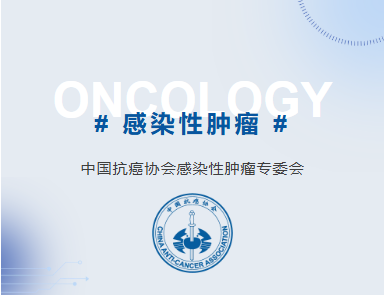中国抗癌协会
立即下载App感染性肿瘤未来展望篇——《中国恶性肿瘤学科发展报告(2024)》

概述
在全球公共卫生体系面临着诸多严峻挑战的当下,感染性肿瘤以其复杂性与危害性凸显,成为关键难题之一。肝癌、宫颈癌、胃癌、食管癌、肺癌等常见恶性肿瘤,大量临床与研究证据表明,其发生发展进程与病原体感染紧密相连,对人类健康和生命质量造成严重损害。在我国,感染性肿瘤的发病率和死亡率居高不下,给患者家庭与社会带来深重负担。深入研究感染性肿瘤,对于提升我国肿瘤防治整体水平意义非凡,是守护民众健康、推进健康中国战略的关键环节。
随着医学科技不断进步,对感染与肿瘤关系的探究逐步深入,感染与肿瘤学科应运而生。该学科聚焦于致病微生物在肿瘤致病机制、精准诊断以及有效治疗等方面的作用,致力于挖掘感染性肿瘤的早期预防手段与干预策略,探索以精准化治疗为代表的全新治疗模式,全方位提高感染性肿瘤的防治水准。
在本报告中,重点关注肝癌、宫颈癌、胃癌、食管癌、肺癌等与微生物感染存在密切关联的肿瘤类型。深入探究细菌(如幽门螺杆菌、链球菌等)、病毒(如EB病毒、HBV病毒等)、真菌(如念珠菌等)在恶性肿瘤致病机制以及治疗响应等方面的影响。系统汇总当前新兴的病原体检测方法,这些前沿技术对于感染性肿瘤的预防工作以及早期诊断具有不可替代的重要价值。同时,针对感染性肿瘤的临床治疗现状,除传统的根除病原体、免疫治疗和靶向治疗手段外,详细剖析如CAR-T疗法、mRNA疫苗等新兴治疗手段在临床试验阶段所展现出的积极疗效,从预防、诊断、治疗三个维度全面且深入地剖析感染与肿瘤学科的发展态势。
此外,本报告精心整理国内外感染与肿瘤领域正在积极推进的重大计划和项目,细致对比国内外在这一研究方向上的差异所在,全面总结我国感染与肿瘤学科发展过程中的优势与不足,对未来发展方向与应对策略进行前瞻性展望,力求为后续我国感染性肿瘤防治事业发展提供科学、精准的指导依据,助力我国在全球感染性肿瘤防治领域迈向更高水平。

4. 本学科发展趋势与对策
4.1 感染性肝癌
发展趋势:
精准医学推动、免疫治疗进一步应用、人工智能与大数据融合应用、全球肝癌防治策略协同推进。
对策:
①加大基础研究投入:聚焦病毒-宿主相互作用等领域,鼓励学科交叉合作,加强临床与科研合作。
②推进早期筛查和精准治疗:推广液体活检技术,提升基层医院筛查能力。
③加强国际合作与经验分享:共享研究成果与技术,开展全球合作攻克肝炎防治难题。
④优化治疗政策与资源分配:合理配置医疗资源,提高医保覆盖率。
4.2 感染性宫颈癌
发展趋势:
空间多组学技术、类器官模型、单剂次疫苗接种策略、治疗性疫苗协同发展。
对策:
①在疫苗可及性方面,应推动九价疫苗纳入国家免疫规划。
②筛查全覆盖是宫颈癌防控的重要环节。
③多学科协同对于感染性宫颈癌的研究和防治至关重要。
4.3 感染与胃癌
发展趋势:
未来5年需进一步研究感染因素在胃癌中的作用机制,全面分析胃微生物群差异,探讨其与胃癌发生的关系,寻找早期筛查标志物,探索预防和治疗策略,推动个性化治疗方案发展,加强幽门螺杆菌防控,建立高危人群监测与干预体系,加强多学科人才培养。
对策:
①加强对幽门螺杆菌、EBV及其他微生物在胃癌中作用机制的研究。
②全面分析胃癌患者与健康人群胃微生物群的差异。
③寻找可用于胃癌早期筛查和诊断的特异性强、敏感性高的胃微生物标志物。
④研究通过调节胃微生物群来预防或治疗胃癌的可能性,开展微生物与免疫治疗的联合研究。
⑤推动个性化治疗方案的发展。
⑥加强幽门螺杆菌感染的防控,提高公众认识,推广预防措施,加强筛查和根除治疗,建立高危人群监测与干预体系。
⑦加强微生物学、肿瘤学、分子生物学、临床医学等多学科交叉领域的专业人才培养。
4.4 感染与食管癌
发展趋势:
①感染相关致癌机制的多维度解析:整合多种技术,系统解析病原体在食管癌发生中的作用,建立动态分子网络模型,关注微生物群与免疫细胞的交互作用。
②感染风险分层与精准预防策略的融合:构建基于感染因素的风险预测模型,实现高危人群早期识别,推行区域化干预措施。
③抗感染与抗肿瘤治疗的协同创新:免疫联合疗法、微生物调控、靶向-放疗协同。
④多学科协作与大数据平台建设:建立多学科联合诊疗模式,依托人工智能构建跨区域临床数据库。
⑤全球健康视角下的防控体系优化:针对食管癌发病的东西方差异,制定差异化防控策略,强化基层医疗机构的筛查能力,关注肥胖相关代谢性炎症与食管腺癌的关联,推动国际协作研究纳入感染因素分析。
对策:
①加强对感染相关致癌机制的多维度研究,整合多种技术解析病原体作用,建立动态分子网络模型,关注微生物群与免疫细胞交互。
②融合感染风险分层与精准预防策略,构建风险预测模型,识别高危人群,实施区域化干预。
③创新抗感染与抗肿瘤治疗协同,开展免疫联合疗法、微生物调控及靶向-放疗协同研究。
④推动多学科协作与大数据平台建设,建立联合诊疗模式,构建跨区域临床数据库。
⑤从全球健康视角优化防控体系,制定差异化防控策略,强化基层筛查,关注代谢性炎症,推动国际研究纳入感染因素分析。
4.5 感染与肺癌
发展趋势:
未来五年,精准医学与抗感染策略的深度融合将成为改善预后的关键。需整合“预防-诊断-治疗-科研-政策”全链条,破解病原体与肿瘤的复杂互作网络。
对策:
①病因学与肺癌防治:深化传统病原体及新重视的病原体致癌机制研究,构建全链条体系,实现从被动治疗向主动干预转型。
②诊断技术:发展人工智能与跨学科合作,建立动态图谱数据库,形成精准干预体系,提升诊断规范化与可及性。
③治疗策略:建立“癌肺同治”理念,建设“肿瘤呼吸病学”学科,推动器官替代治疗研究及应用。
【主编】
高社干 河南科技大学第一附属医院
周云芝 应急总医院
赵建夫 暨南大学附 属第一医院
刘振华 福建省立医院
鲁智豪 北京大学肿瘤医院
王晓燕 山西省肿瘤医院
【副主编】
陈小兵 河南省肿瘤医院
贾瑞诺 河南科技大学第一附属医院
居来提.艾尼瓦尔 新疆医科大学第一附属医院
罗 玲 重庆大学附属肿瘤医院
朴红梅 延边大学附属医院
乔 坤 深圳市第三人民医院
【编委】(按姓氏拼音排序)
陈 昊 兰州大学第二附属医院
高思萌 暨南大学附属第一医院
谷变利 河南科技大学第一附属医院
侯小华 迁安市人民医院
黄 艳 华北理工大学附属医院
贾国霞 暨南大学附属第一医院
廖 婕 暨南大学附属第一医院
柳晓素 山西省肿瘤医院
任 卉 内蒙古医科大学附属医院
石林林 河南科技大学第一附属医院
苏志雄 福建省立医院
孙智婷 暨南大学附属第一医院
陶筱婷 深圳市第三人民医院
王建正 河南省肿瘤医院
王晶晶 应急总医院
王立红 内蒙古医科大学附属医院
王知广 延边大学附属医院
阳 昊 重庆大学附属肿瘤医院
张桂枫 福建省立医院
张军千 河南科技大学第一附属医院
★
参考文献(向上滑动阅览)
[1] Wen, F., Han, Y., Zhang, H., Zhao, Z., Wang, W., Chen, F., et al. Epstein-Barr virus infection upregulates extracellular OLFM4 to activate YAP signaling during gastric cancer progression. Nature communications. 2024, 15, 10543.
[2] Bray, F., Ferlay, J., Soerjomataram, I., Siegel, R.L., Torre, L.A., Jemal, A. Global cancer statistics 2018: GLOBOCAN estimates of incidence and mortality worldwide for 36 cancers in 185 countries. CA: a cancer journal for clinicians. 2018, 68, 394-424.
[3] Xie C, Xie DY, Xu QH, et al. The everest project's 5-year update:efficacy of PegIFNα therapy in NA-suppressed HBeAg negative CHB[C]. Kyoto: APASL 2024 Abstract O-0161.
[4] World Health Organization. Guidelines for the prevention, diagnosis, care and treatment for people with chronic hepatitis B infection (text extract): executive summary[J]. Infect Dis Immun,2024, 4(3):103-105.
[5] Ji, D., Chen, Y., Bi, J., Shang, Q., Liu, H., Wang, J.B., et al. Entecavir plus Biejia-Ruangan compound reduces the risk of hepatocellular carcinoma in Chinese patients with chronic hepatitis B. Journal of hepatology. 2022, 77, 1515-24.
[6] Yuen MF, Lim YS, Yoon KT, et al. VIR-2218 (elebsiran) plus pegylated interferon-alfa-2a in participants with chronic hepatitis B virus infection: a phase 2 study[J]. Lancet Gastroenterol Hepatol,2024, 9(12):1121-1132.
[7] Yuen, MF, Heo J, Nahass R, et al. Imdusiran (AB-729) administered every 8 weeks in combination with 24 weeks of pegylated interferon alfa-2a in virally suppressed, HBeAg-negative subjects with chronic HBV infection leads to HBsAg loss in some
subjects at end of IFN treatment[J]. J Hepatol, 2024, 80:S814-S815 (abstr WED-371).
[8] 丁洋, 李尧, 卢秉超, 窦晓光 . 2024 年病毒性肝炎相关临床研究进展[J]. 中华肝脏病杂志,2025,33(1):3-6.
[9] Miao Z, Zhang S, Ou X, et al. Estimating the global prevalence, disease progression, and clinical outcome of hepatitis delta virus infection.J Infect Dis.2020;221(10):1677-1687.
[10] Urban S, Neumann-Haefelin C, Lampertico P. Hepatitis D virus in 2021: virology, immunology and new treatment approaches for a difficult-to-treat disease. Gut. 2021;70(9):1782-1794. .
[11]Sung H, Ferlay J, SiegelRL, Laversanne M,Soerjomataram I, Jemal A, et al. GLOBOCAN estimates of incidence and mortality worldwide for 36 cancers in 185 countries.CA Cancer J Clin.(2020) 71:209-49.
[12]《中国癌症统计报告 2023》: 中国国家癌症中心发布的统计数据.
[13]Burd EM. Human papillomavirus and cervical cancer. Clin Microbiol Rev. 2003 Jan;16(1):1-17. doi: 10.1128/CMR.16.1.1-17.2003. PMID: 12525422; PMCID: PMC145302.
[14]Di Gao, GengliZhao, XueyinWang, et al. Association Between High-Risk HumanPapillomavirus Infection and Cervical Cytology in Health Check-Up Women-23 PLADs, China,2023.
[15] 美年健康研究院. 《美年健康2023年度健康体检大数据蓝皮书》.
[16] 邱妙珍,徐瑞华. EBV相关性胃癌的流行病学、分子特征及其免疫治疗策略的临床应用. 中国科学:生命科学. 2024.
[17] Kim, S.T., Cristescu, R., Bass, A.J., Kim, K.M., Odegaard, J.I., Kim, K., et al. Comprehensive molecular characterization of clinical responses to PD-1 inhibition in metastatic gastric cancer. Nature medicine. 2018, 24, 1449-58.
[18] Yan, T., Sun, H., Liao, Y., Zhou, J. Helicobacter pylori mediated niche environment aberrations promote the progression of gastric cancer. Genes & diseases. 2024, 11, 101207.
[19] Fu, K., Cheung, A.H.K., Wong, C.C., Liu, W., Zhou, Y., Wang, F., et al. Streptococcus anginosus promotes gastric inflammation, atrophy, and tumorigenesis in mice. Cell. 2024, 187, 882-96.e17.
[20] Zhou, C.B., Pan, S.Y., Jin, P., Deng, J.W., Xue, J.H., Ma, X.Y., et al. Fecal Signatures of Streptococcus anginosus and Streptococcus constellatus for Noninvasive Screening and Early Warning of Gastric Cancer. Gastroenterology. 2022, 162, 1933-47.e18.
[21] 张聚, 董强, 时永全. 口腔菌群与胃癌相关性的研究进展. 肿瘤防治研究. 2024, 51, 147-51.
[22] Yu, L.C., Li, Y.P., Xin, Y.M., Mao, M., Pan, Y.X., Qu, Y.X., et al. Application of Fusobacterium nucleatum as a biomarker in gastrointestinal malignancies. World journal of gastrointestinal oncology. 2024, 16, 2271-83.
[23] 孙雷, 郑相云, 秦国宁, 朱延袤, 孔令琪, 张焕虎. 胃内菌群在胃癌的诊断与治疗中的应用进展. 中华胃肠外科杂志. 2024, 27, 756-63.
[24] Habimana, J.D., Mukama, O., Chen, G., Chen, M., Amissah, O.B., Wang, L., et al. Harnessing enhanced CRISPR/Cas12a trans-cleavage activity with extended reporters and reductants for early diagnosis of Helicobacter pylori, the causative agent of peptic ulcers and stomach cancer. Biosensors & bioelectronics. 2023, 222, 114939.
[25] Alberti, A., Stocker, G., Lordick, F., Hacker, U.T., Kobitzsch, B., Haffner, I., et al. Plasma EBV DNA as a prognostic factor in EBV associated gastric cancer: a multicenter, prospective study (EBV PRESAGE study). Frontiers in oncology. 2023, 13, 1276138.
[26] Pan, K.F., Li, W.Q., Zhang, L., Liu, W.D., Ma, J.L., Zhang, Y., et al. Gastric cancer prevention by community eradication of Helicobacter pylori: a cluster-randomized controlled trial. Nature medicine. 2024, 30, 3250-60.
[27] Shen, L., Zhang, Y., Li, Z., Zhang, X., Gao, X., Liu, B., et al. First-line cadonilimab plus chemotherapy in HER2-negative advanced gastric or gastroesophageal junction adenocarcinoma: a randomized, double-blind, phase 3 trial. Nature medicine. 2025.
[28] Park, J.H., Cho, H.J., Seo, J., Park, K.B., Kwon, Y.H., Bae, H.I., et al. Genetic landscape and PD-L1 expression in Epstein-Barr virus-associated gastric cancer according to the histological pattern. Scientific reports. 2023, 13, 19487.
[29] 中国抗癌协会胃癌专业委员会. 基于PD-L1蛋白表达水平的胃癌免疫治疗专家共识(2023年版). 中国肿瘤临床. 2024, 51, 55-63.
[30] Dayyani, F., Chao, J., Lee, F.C., Taylor, T.H., Neumann, K., Cho, M.T. A phase II study of cabozantinib and pembrolizumab in advanced gastric/gastroesophageal adenocarcinomas resistant or refractory to immune checkpoint inhibitors. The oncologist. 2024, 29, 721-e1088.
[31] Holden AJ, Attard TJ, Laughton KM, et al. Porphyromonas gingivalis lipopolysaccharide weakly activates M1 and M2 polarized mouse macrophages, but induces inflammatory cytokines. Infect Immun. 2014; 82:4190–4203.
[32] 许海军, 齐义军, 伍当柔, 等. 牙龈卟啉单胞菌诱发炎症微环境促进食管鳞状细胞癌发生[J]. 中华肿瘤杂志, 2024, 46(8): 746-754. .
[33] Ding N, Cheng Y, Liu H, et al. Fusobacterium nucleatum Infection Induces Malignant Proliferation of Esophageal Squamous Cell Carcinoma Cell by Putrescine Production. Microbiol Spectr. Published online February 22, 2023.
[34] Dadgar N, Edlukudige Keshava V, Raj MS, et al. The Influence of the Microbiome on Immunotherapy for Gastroesophageal Cancer. Cancers (Basel). 2023;15(18):4426.
[35] Shijimaya T, Tahara T, Yamazaki J, et al. Microbiome of esophageal endoscopic wash samples is associated with resident flora in the esophagus and incidence of cancer. Sci Rep. 2024;14(1):19525.
[36] Gao SG, Qi ZP, Qi YJ, et al. Porphyromonas gingivalis predicts local recurrence after endoscopic submucosal dissection of early esophageal squamous cell carcinoma or precancerous lesion. BMC Cancer. 2023;23(1):43.
[37] 赵亚莉, 李佳怡, 谷变利, 等. Ag?Se纳米颗粒通过清除牙龈卟啉单胞菌抑制食管癌恶性进展. 南方医科大学学报,2025.
[38] Kim, Y., Pierce, C.M., Robinson, L.A. Impact of viral presence in tumor on gene expression in non-small cell lung cancer. BMC cancer. 2018, 18, 843.
[39] Robinson, L.A., Jaing, C.J., Pierce Campbell, C., Magliocco, A., Xiong, Y., Magliocco, G., et al. Molecular evidence of viral DNA in non-small cell lung cancer and non-neoplastic lung. British journal of cancer. 2016, 115, 497-504.
[40] Khan, S., Imran, A., Khan, A.A., Abul Kalam, M., Alshamsan, A. Systems Biology Approaches for the Prediction of Possible Role of Chlamydia pneumoniae Proteins in the Etiology of Lung Cancer. PloS one. 2016, 11, e0148530.
[41] 姜艳萍, 叶元滋, 赵荣荣, 罗文武, 吴正升. 肺腺体前驱病变和肺腺癌中p16表达与HPV感染的相关性. 临床与实验病理学杂志.
[42] 李华,陈明,张璐,等.肺部微生物群在非小细胞肺癌中的作用[J]. 中华肿瘤杂志, 2021, 43(5): 512-518.
[43] 陈志强,李晓峰,王雪梅,等.结核分枝杆菌慢性感染对肺癌发生发展的影响及其分子机制[J]. 中国肺癌杂志, 2020, 23(8): 689-695.
[44] 李蕾蕾,高静韬,王琳,宋言峥.美国国家综合癌症网络《HIV感染者恶性肿瘤临床实践指南》(2023年第1版)非小细胞肺癌部分解读[J].结核与肺部疾病杂志,2023,4(3):198-202
[45] Monk BJ, Colombo N, Tewari KS, Dubot C, Caceres MV, Hasegawa K, Shapira-Frommer R, Salman P, Yañez E, Gümü? M, Olivera Hurtado de Mendoza M, Samouëlian V, Castonguay V, Arkhipov A, Tekin C, Li K, Keefe SM, Lorusso D; KEYNOTE-826 Investigators. First-Line Pembrolizumab + Chemotherapy Versus Placebo + Chemotherapy for Persistent, Recurrent, or Metastatic Cervical Cancer: Final Overall Survival Results of KEYNOTE-826. J Clin Oncol. 2023 Dec 20;41(36):5505-5511.
[46] Oaknin A, Gladieff L, Martínez-García J, Villacampa G, Takekuma M, De Giorgi U, Lindemann K, Woelber L, Colombo N, Duska L, Leary A, Godoy-Ortiz A, Nishio S, Angelergues A, Rubio MJ, Fariñas-Madrid L, Yamaguchi S, Lorusso D, Ray-Coquard I, Manso L, Joly F, Alarcón J, Follana P, Romero I, Lebreton C, Pérez-Fidalgo JA, Yunokawa M, Dahlstrand H, D'Hondt V, Randall LM; ENGOT-Cx10–GEICO 68-C–JGOG1084–GOG-3030 Investigators. Atezolizumab plus bevacizumab and chemotherapy for metastatic, persistent, or recurrent cervical cancer (BEATcc): a randomised, open-label, phase 3 trial. Lancet. 2024 Jan 6;403(10421):31-43.
[47] Ford, A.C., Yuan, Y., Park, J.Y., Forman, D., Moayyedi, P. Eradication Therapy to Prevent Gastric Cancer in Helicobacterpylori-Positive Individuals: Systematic Review and Meta-Analysis of Randomized Controlled Trials and Observational Studies. Gastroenterology. 2025.
[48] Preston-Alp, S., Caruso, L.B., Su, C., Keith, K., Soldan, S.S., Maestri, D., et al. Decitabine disrupts EBV genomic epiallele DNA methylation patterns around CTCF binding sites to increase chromatin accessibility and lytic transcription in gastric cancer. mBio. 2023, 14, e0039623.
[49] Geng H, Xing Y, Zhang J, et al. Association between viral infection other than human papillomavirus and risk of esophageal carcinoma: a comprehensive meta-analysis of epidemiological studies. Archives of Virology. 2022;167(1):1-20.
[50] Hussain S, Rani J, Tulsyan S, et al. Influence of HPV infection in esophageal cancer: A systematic review and meta-analysis. Gene Reports. 2022;28:101640.
[51] Wiklund AK, Santoni G, Yan J, et al. Risk of Esophageal Adenocarcinoma After Helicobacter pylori Eradication Treatment in a Population-Based Multinational Cohort Study. Gastroenterology. 2024;167(3):485-492.e3.
[52] Hu K, Huang T, Zhang Y, et al. A causal association between esophageal cancer and the oral microbiome: A Mendelian randomization study based on an Asian population. Frontiers in Cellular and Infection Microbiology. 2024;14:1420625.
[53] Cao F, Li YZ, Zhang DY, et al. Human papillomavirus infection and the risk of cancer at specific sites other than anogenital tract and oropharyngeal region: an umbrella review. EBioMedicine. 2024;104:105155.
[54] Zhang, Y, Li, X, Wang, Z. et al. Antibiotics modulate the tumor microenvironment and enhance chemotherapy efficacy in non-small cell lung cancer. Journal of Thoracic Oncology, 27(3), 456–465.
[55] Julio C Osorio, Cristian Andrade-Madrigal, et al. International journal of molecular sciences 2024 Dec 10;25(24).
[56] Gupta PK,Tripathi D,Kulkarni S,et al.Mycobacterium tuberculosis H37Rv infected THP-1 cells induce epithelial mesenchymal transition (EMT) in lung adenocarcinoma epithelial cell line (A549)[J].Cell Immunol,2016,300:33-40.
[57] M?d?lina Preda, Bogdan Cosmin T?nase, et al. International journal of environmental research and public health 2023 01 10;20(2).
[58] M. García-Castillo, et al.Liquid biopsy for simultaneous detection of lung cancer and pulmonary pathogens using next-generation sequencing. Clinical Cancer Research, 28(12), 2549-2561.
[59] J. R. Smith, et al. (2023). CRISPR-mediated E7 disruption enhances anti-PD-1 efficacy in HPV-driven lung cancer.Nature Cancer, 4(2), 210-225.
[60] L. Wang, et al.Anti-LMP1 CAR-T cell therapy combined with avelumab for EBV-associated lung carcinoma. Journal for ImmunoTherapy of Cancer, 10(3), e004532.
[61] S. K. Sharma, et al.Adjuvant anti-tuberculosis therapy improves outcomes in lung cancer patients with latent TB infection. The Lancet Oncology, 22(12), 1719-1731.
[62] Y. Chen, et al.Helicobacter pylori eradication augments anti-PD-1 efficacy in advanced lung adenocarcinoma. Cancer Research, 83(7), 1145-1158.
[63] V. Matson, et al.Bifidobacterium supplementation reshapes gut microbiota to potentiate anti-PD-1 efficacy in lung cancer. Cell Host & Microbe, 31(4), 560-572.